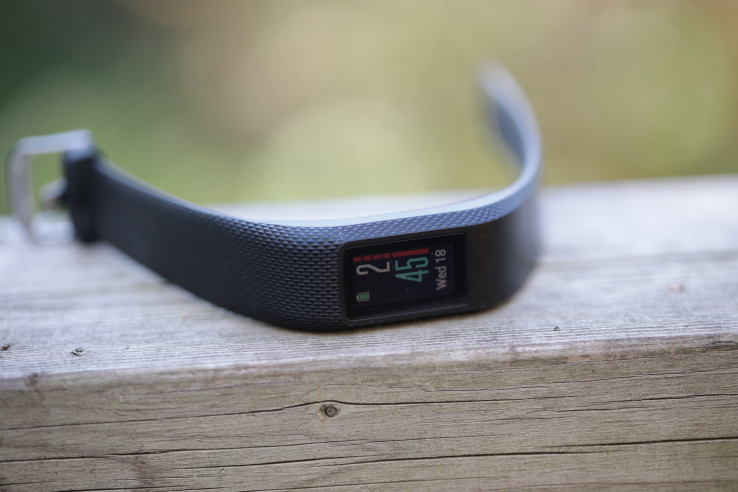

If you’re looking to get pretty much all the benefits of a smartwatch without a watch, and to track your activity and sport performance with tools that are more than up to the task, Garmin’s Vivosport is a strong option, with a price tag that comes in well under that of most dedicated smartwatches. It works well with both Android and iOS devices, has a built-in heart rate tracker and GPS, and provides access to all kinds of preset activity types for a range of workout options.
The Vivosport is the first Garmin wearable I’ve used for any significant length of time, and it proved a capable companion both in a smartwatch capacity, and as an activity tracker. The lightweight band is mostly polymer and silicone, with a specially strengthened glass protecting the transflective touchscreen display. It’s waterproof for wear while swimming, too, and it can last up to a week while operating in smartwatch mode, or eight hours of dedicated GPUS use – figures which were backed up by my tests, and generally resulted in around four or five days of use between charges along with daily run tracking.
Vivosport’s small screen is only 72 x 144 pixels in terms of resolution, but it’s perfectly readable in both bright sunlight and in the dark thanks to backlighting. It’s also touch sensitive, and the UI is designed with maximizing information and readability while minimizing input required in mind. I found it occasionally frustrating to get it to move forward or back, with the input resulting in the wrong action, but mostly interacting with the device on my wrist was easy enough overall.
What I really enjoyed about the Vivosport was that it offered just the right amount of smart features, with a low-profile and comfortable design ideal for all-day use. The Vivosport is the perfect wearable companion for some who isn’t a watch wearer generally, in fact, or for anyone who wants to wear one while also still wearing a traditional wristwatch on their other arm (I fall into this latter category).
The flexible silicone used in the integrated band is also a strength of this device vs. other similar products. It’s stretchy enough that you can get a good, secure fit using the smartly designed clasp (which also has a great catcher for keeping the excess band in control). You can easily find a fit that seems tight enough that you’ll get good readings from the optical heart rate monitor on the Vivosport’s underside, while also not being so tight or inflexible that it feels uncomfortable to wear.
Vivosport also doesn’t really need you to be near your phone to work – it won’t get smart notifications if you aren’t around your device, but it can track runs and other activities independently, and store up to 7 total timed activities or 14 days worth of activity tracking data between syncing. It connects to your device using Bluetooth Smart, and it’s dead simple to set up and activate, too.
Additional features include the ability to provide basic weather info, as well as find my phone features and remote controls for Garmin VIRB action cams just add to the overall value, but you don’t need to really use any of those things to make the most of the Vivosport, which at heart is a great, learning activity monitor that can track sleep, automatically increment your step goal based on your fitness level, and even automatically pause workouts while in progress. I especially enjoyed the Move IQ feature that autodetects activity even if you forget to start one manually, which
In summary, Garmin’s Vivosport is something that offers all the smartwatch features most users need, along with key health and fitness elements that could inspire better habits and improve existing routines for those with active lifestyles. If I could change anything, I’d replace the proprietary charing cable (since it means you’ll have to buy a new one if you lose it), but the Vivosport’s $199.99 asking price is a good bargain for everything you get, from the color touchscreen display to the week-long battery life and connected smartphone features.

